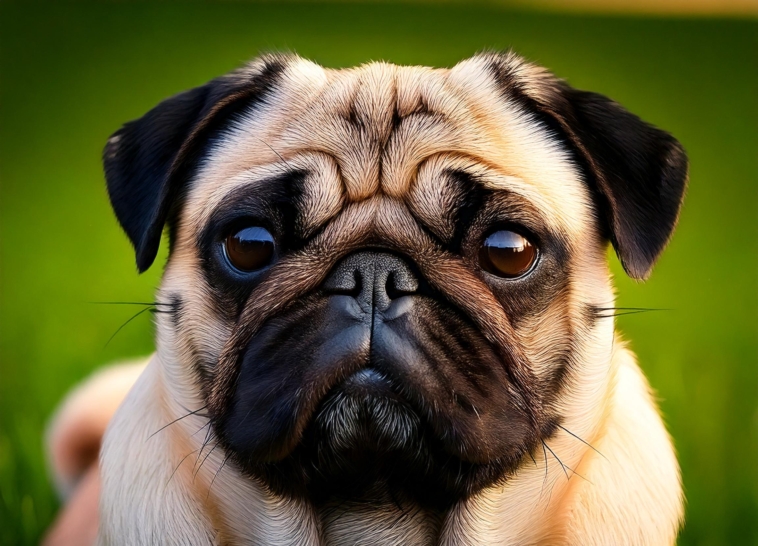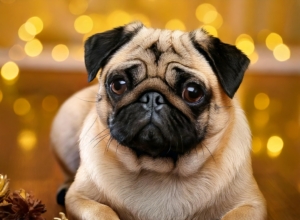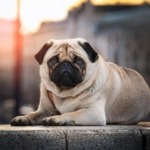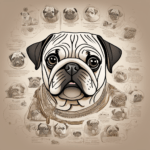Last updated on May 17th, 2025
Pugs Are Good Pets (and They Know It)
Let’s be real—pugs did not travel here to frolic; they traveled here to conquer hearts through their flattened faces, bug eyes, and cinnamon-roll curling tails. Don’t get fooled by their miniature proportions—they are packed with personality and charm (and quite probably, a snack demand).
Quick Facts:
- Lifespan: 12–15 years (essentially, long enough to blanket your couch)
- Temperament: Cuddling, breathing machines
- Exercise: Yes, they need it. No, they are not excited about it.
These snuggle nuggets love people and are wonderful social butterflies-even if they snore louder than your granddaddy.
Royal Origins of the Pug (No, Seriously)
Pugs didn’t fall from the sky; they essentially fell from thrones. In 200 BC, they were pampered in ancient China and lived a royal life. Those characteristic wrinkles? Chinese emperors thought they were godly—literally.
- China: These dogs were royalty in the palace, known as “Lo-Sze.” Probably had better room service than most humans.
- Europe: Dutch traders in the 16th century introduced pugs to Europe, and noblemen fell head over loafers for them.
Throughout the centuries, humans haven’t just loved them for their adorable squishiness—but for their loyal, couch-sharing companionship.
What a Pug Looks Like (Besides “Always Judging You”)
Pugs have a few very unique features, making them the easiest dog to spot in a sea of fluff.
- Size: Miniature clowns measuring 10–13 inches at the shoulder, weighing 14–18 pounds (much of which is attitude).
- Coat: Smooth, shiny, and in fashionable colors like fawn, black, silver, or apricot.
- Ears: “Button” or “rose”-shaped and floppy, looking like tiny ear-pillows.
- Tail: Rolled up tighter than your headphones.
These creatures are basically wrinkly, snorting bundles of joy.
Personality: Like a Comedian That Loves Belly Rubs
Pugs are full of personality. They’ve got attitude, charisma, and a deep passion for lap-sitting.
- Affectionate: Don’t believe in “personal space.”
- Playful: Will chase things that don’t exist or their own shadow for fun.
- Sociable: Gets along with literally everyone—from toddlers to the mailman.
- Stubborn: Will act like they can’t hear you if there aren’t snacks involved.
- Intelligent: Smart enough to pretend nap time to avoid bath time.
- Low-Energy: Built for cuddles, not cardio.
Pug Living: A Lifestyle of Lounging
Pugs have special life needs. Here’s how to make them live their best life as couch potato legends:
- Temperature: Heat? Absolutely not. These dogs turn into puddles of slobber on a hot summer day.
- Comfort: A cozy bed and some room to flop out theatrically is de rigueur.
- Exercise: Brief daily strolls or brief bursts of zoomies—don’t overdo it.
- Attention: They need love and snuggles like plants need sunlight.
Health & Lifespan: Fragile, Yet Fabulous
Let’s face it, pugs aren’t built for tough terrain—or stairs. They’re a bit of a challenge health-wise.
Common Health Issues:
- Respiratory Problems: Because of their adorable flat face, air is more of an invitation than a guarantee.
- Eye Issues: From cherry eye to cataracts—those googly eyes need monitoring.
- Hip Dysplasia: Sometimes their joints protest motion.
- Skin Allergies: Wrinkle washing is not an option. It’s love and hygiene in one.
Pro Tips for a Long, Happy Pug Life:
- Feed them like royalty—but healthy royalty.
- Exercise daily (yes, even 3 minutes of chasing a squeaky toy).
- Vet check-ups—your pug thinks they’re tough but needs TLC.
Grooming: AKA Wrinkle Maintenance
Grooming a pug is basically being their personal spa tech.
- Wipe their wrinkles daily (yes, this is a thing).
- Clip their nails every now and then—unless you want random claw art on your arms.
- Monitor their weight—a chubby pug may be cute, but not healthy.
Training and Social Life: Short, Sweet & Treat-Filled
Pugs can learn things… if they feel like it. Their attention span is as short as their legs, so keep it brief.
- Positive Reinforcement: Treat bribery = success.
- Short Sessions: Train in sessions shorter than a pug nap (so, really short).
- Basic Commands: “Sit,” “Stay,” and “Don’t eat that!”
- Crate Training: Gives them a cozy den (and you a break).
- Obedience Classes: They’ll pretend to learn, you’ll pretend to believe them.
Pugs and Kids/Pets: Love at First Sniff
Pugs are the life of the paw-ty. Great with kids, chill with other pets, and masters of non-aggression (unless food is involved).
- They tolerate chaos with grace (or confusion).
- Love to play and then nap for hours after.
- Rarely aggressive unless you’re a vacuum cleaner.
Just introduce them slowly to your family zoo and reward all the cuteness.
Thinking of Getting a Pug? Let’s Talk Reality
Before diving into the snorts and snuggles of life:
- Adopt if you can! Shelters are full of pugs looking for retirement homes (aka your lap).
- Know Their Health Issues: Get ready for some vet visits and possible thunderous snoring.
- Lifestyle Match: Are you chill? They’re chill. Match made in heaven.
- Budget: Pugs come with some expenses to them—healthcare, grooming, and perhaps snacks, snacks, snacks.
Always see the pug in person if at all possible, and research the breeder or rescue group thoroughly.
Final Thoughts: Pugs Are the Potato Chips of Dogs
You can’t have just one. They’re goofball, sweet, and snorty—and 100% adorable.
Just keep in mind:
- They need attention, not just cuddles.
- They’re social butterflies who wilt in the sun.
- They’ll be your faithful, snoozy, snack-obsessed sidekick for over a decade.
If you want a dog that’s basically a warm, squishy emoji with legs, a pug might be your perfect match.





